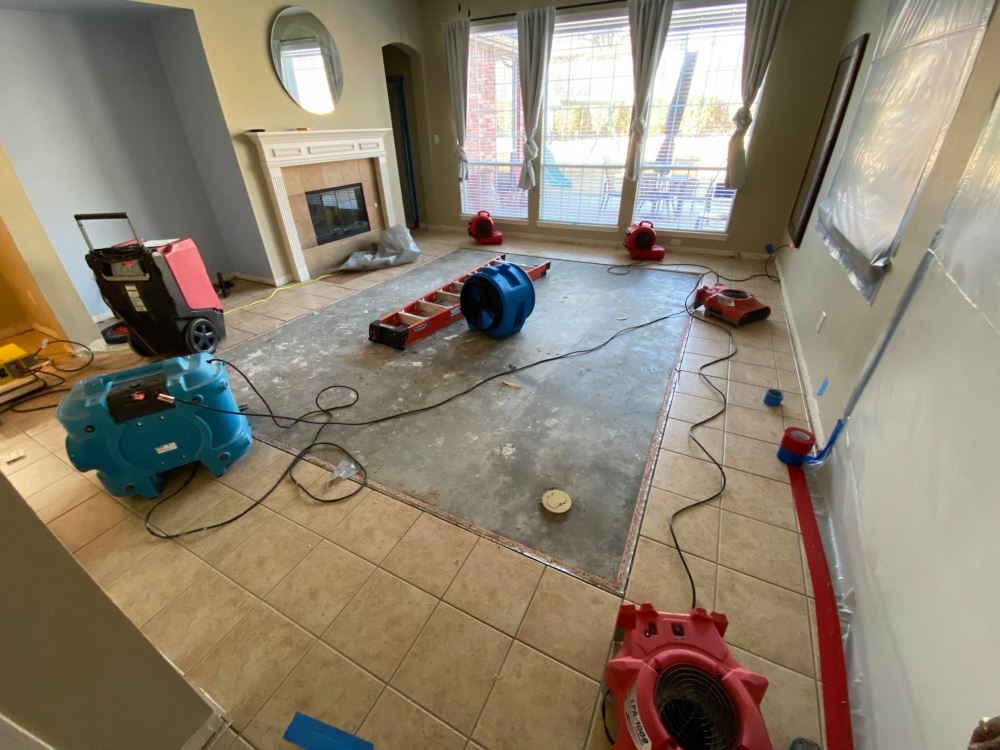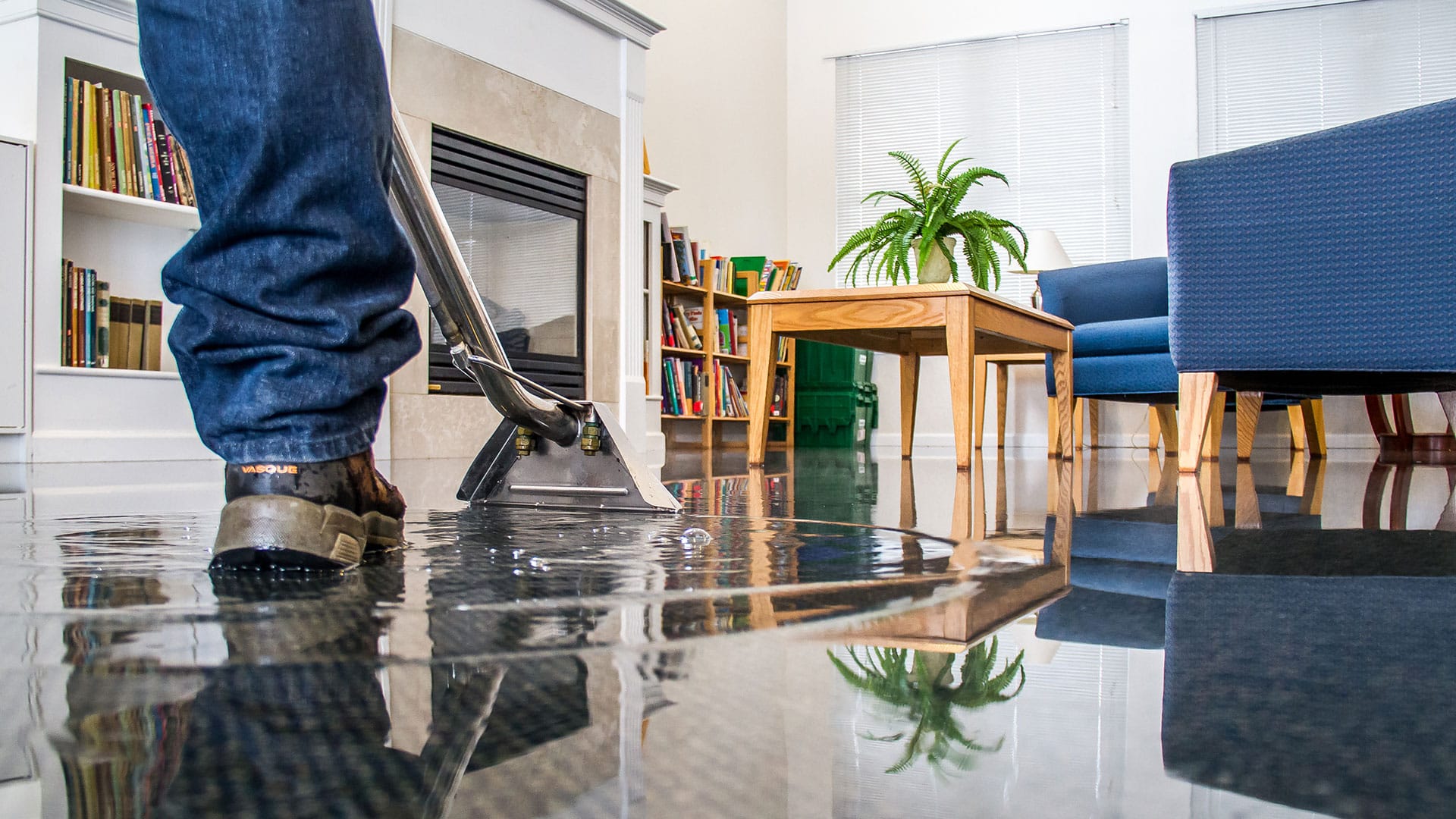Leading Tips for Effective Water Damage Restoration: Protect Your Home Today
Water damage can strike unexpectedly, causing significant disturbance and potential dangers. Efficient restoration needs an organized technique to minimize additional injury. From assessing the damage to applying safety nets, each step plays a vital function in securing residential or commercial property. Comprehending these approaches can make all the difference in the aftermath of a water-related situation. What necessary actions should be focused on to guarantee complete protection?
Evaluate the Damage Immediately
When a water damage event happens, it is important to assess the damage right away to reduce more issues. This first evaluation assists establish the degree of the damage and identifies influenced areas. Water can permeate right into wall surfaces, floorings, and furnishings, bring about mold development and architectural instability otherwise attended to quickly. A detailed assessment must include looking for discoloration, dampness, and moldy odors, which show dampness presence. It is also crucial to document the damage via photographs and notes for insurance purposes. Involving specialists for a much more in-depth analysis may be necessary, especially when managing concealed or comprehensive damage. Water Damage Restoration. Early recognition and accurate assessment lay the structure for reliable restoration and secure the residential or commercial property from extra complications
Shut Off the Water Supply
Shutting off the water system is a necessary action in protecting against more damage during a water-related event. When a leak or flood happens, immediate activity is crucial to minimize the extent of the damage. Locating the major water shut-off valve ought to be a top priority. This shutoff is frequently situated near the water meter or where the water line goes into the residential or commercial property. Once located, transforming the valve clockwise will quit the circulation of water. In cases where the major valve is inaccessible, specific shut-off valves for appliances might likewise be utilized. Without delay closing off the supply of water not just secures the building from added injury however also promotes the subsequent restoration procedure, guaranteeing that recovery initiatives can begin right away.
Remove Excess Water Quickly

Eliminating excess water quickly is important for minimizing damage and preventing mold development in affected locations. The longer water remains touching materials such as drywall, insulation, and wood, the higher the danger of architectural damage and the growth of mold and mildew. Water Damage Restoration. House owners must act quickly to assess the scenario and make use of appropriate tools, such as damp vacuums or pumps, to extract standing water effectively. If the quantity of water is substantial, getting in touch with specialist restoration solutions might be essential, as they can supply specific devices and proficiency. Furthermore, eliminating furniture and possessions from the damaged location can assist to lower damage and promote the general restoration procedure. Prompt action not just secures building yet likewise aids in a smoother recovery trip
Dry the Affected Location
After eliminating excess water, it is necessary to dry out the afflicted location completely. This includes eliminating any standing water and enhancing air flow to facilitate evaporation. Effective drying will aid protect against mold growth and additional damage.

Get Rid Of Standing Water
Promptly dealing with standing water is vital for efficient water damage restoration. The existence of stagnant water can bring about more building damage and produce an environment for mold development. To minimize these dangers, it is important to remove standing water as quickly as feasible. This procedure typically entails utilizing completely submersible pumps, wet vacuum cleaners, or specialized removal equipment. Professionals suggest evaluating the deepness and degree of the water prior to choosing the appropriate approach for removal. Safety and security preventative measures must also be taken, including putting on protective gear and ensuring electricity is transformed off in affected locations. When the standing water is efficiently gotten rid of, the drying process can start, better guarding the building from recurring damage.
Boost Air Circulation
Enhancing air circulation is essential for properly drying out areas affected by water damage. This procedure aids to accelerate dissipation, reducing the danger of mold and mildew and mold growth. Specialists typically recommend making use of followers to develop a stable air flow throughout the area. Putting box fans in home windows can pull in fresh air, while high-velocity followers can route air flow in the direction of wet surfaces. Water Damage Restoration. Furthermore, opening windows and doors allows for cross-ventilation, enhancing the drying out process. Dehumidifiers can also be used to eliminate excess wetness from the air, further helping in drying. By ensuring that air distributes easily, homeowner can substantially decrease the long-term impacts of water damage and secure the stability of here their framework
Evaluate for Mold Development
Mold development is a severe worry adhering to water damage, as it can lead to health and wellness concerns and architectural deterioration. After any type of flooding or leaks, it is important to perform a detailed assessment of the influenced areas. This consists of monitoring covert rooms such as behind walls, under rugs, and in basements or attic rooms where moisture might remain. Indicators of mold consist of a stuffy odor, staining on surfaces, or noticeable growth. Homeowner should make use of safety equipment when evaluating, as mold spores can posture health and wellness dangers. If mold is spotted, it is crucial to resolve it promptly, as delaying remediation can intensify the trouble and increase the danger of significant health issues for occupants. Early intervention is crucial to effective mold administration.

Repair and Recover Damaged Frameworks
When resolving water damage, it is vital to first examine the structural stability of the influenced areas. This analysis aids identify potential dangers and notifies the necessary repair work techniques. Involving expert restoration services guarantees that the restoration process is carried out securely and successfully.
Evaluate Structural Stability First
Prior to initiating any water damage restoration, it is necessary to evaluate the architectural honesty of the afflicted area. This examination aids recognize any kind of compromised elements, such as walls, foundations, or beams, which may pose safety and security threats - Water Damage Restoration. Examining for indications of bending, cracking, or mold growth is critical, as these indicators can disclose underlying damage that calls for prompt focus. Additionally, recognizing the extent of the damage can direct restoration efforts and figure out whether fixings are viable or if substitute is essential. It is necessary to record findings thoroughly, as this details can be useful for insurance coverage cases or future recommendation. Prioritizing structural evaluation assurances that restoration initiatives continue securely and properly, eventually safeguarding the building and its residents
Usage Specialist Restoration Services
Utilizing expert restoration solutions is crucial for efficiently repairing and bring back broken structures after water incidents. These specialists possess the required training, devices, and experience to alleviate and evaluate water damage thoroughly. They can identify hidden problems, such as mold and mildew development and architectural weaknesses, that may not be instantly noticeable. Expert solutions likewise utilize sophisticated drying techniques and equipment, ensuring that all wetness is eliminated to prevent more damage. Furthermore, they comply with sector standards and policies, ensuring that the restoration procedure is risk-free and efficient. By involving restoration experts, homeowner can accelerate recovery, lessen lasting damage, and inevitably safeguard their financial investment. This positive technique is necessary in maintaining the honesty and security of damaged structures.
Prevent Future Water Damage
To successfully prevent future water damage, homeowners need to adopt a positive strategy to maintenance and fixings. Regular examination of roofing systems, downspouts, and seamless gutters is crucial; stopped up rain gutters can result in water overflow and roof leaks. Additionally, looking for leaks in plumbing fixtures and appliances can ward off possible damage. Home owners need to likewise think about mounting sump pumps in cellars or low-lying locations to handle water accumulation. Sealing cracks in foundations and making certain correct drain around the residential or commercial property are important action in guarding versus water breach. Preserving humidity levels with dehumidifiers can stop mold growth. By implementing these safety nets, house owners can significantly decrease the danger of water damage and safeguard their residential property for the lengthy term.
When a water damage event takes place, it is necessary to assess the damage instantly to reduce more concerns (Water Extraction And Drying). Removing excess water immediately is crucial for lessening damage and protecting against mold and mildew development in affected locations. Swiftly dealing with standing water is critical for effective water damage restoration. The existence of stagnant water can lead to additional property damage and create an atmosphere conducive to mold and mildew development. Prior to starting any kind of water damage restoration, it is important to evaluate the architectural stability of the damaged area